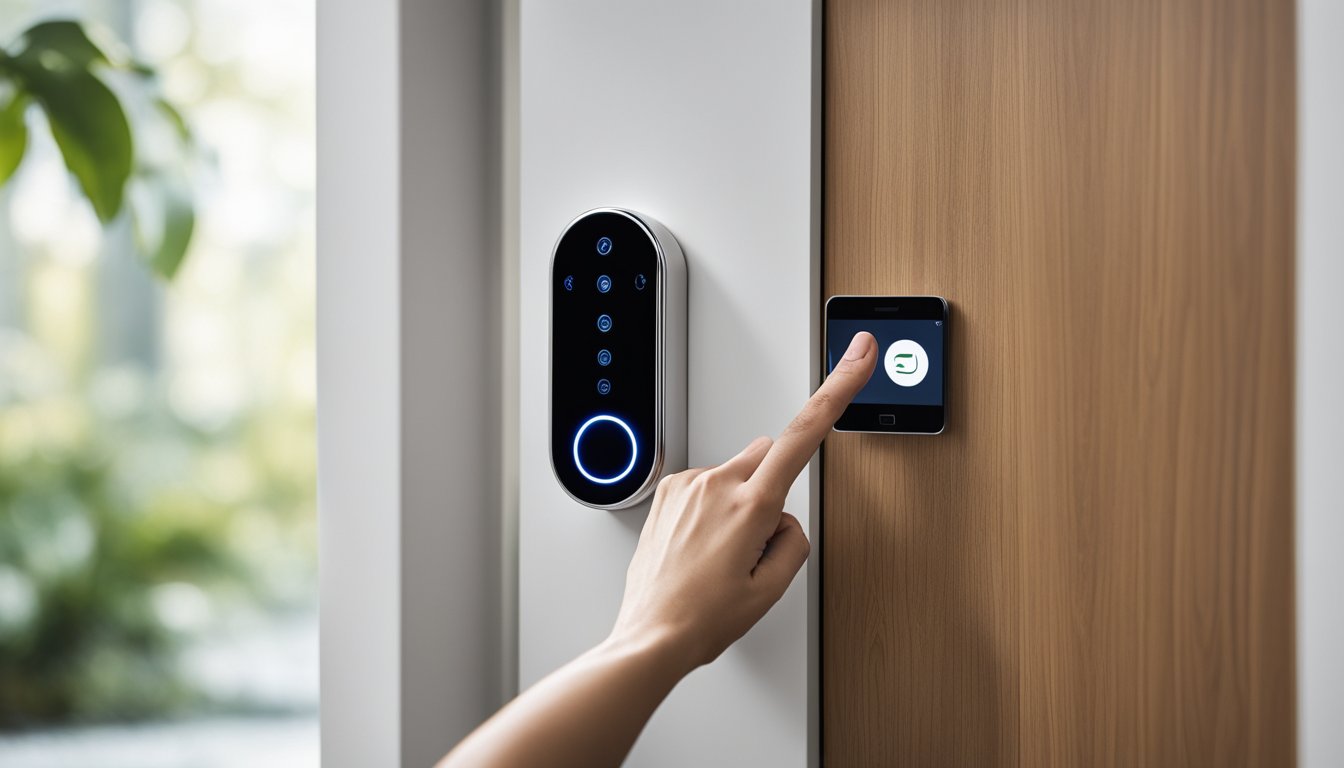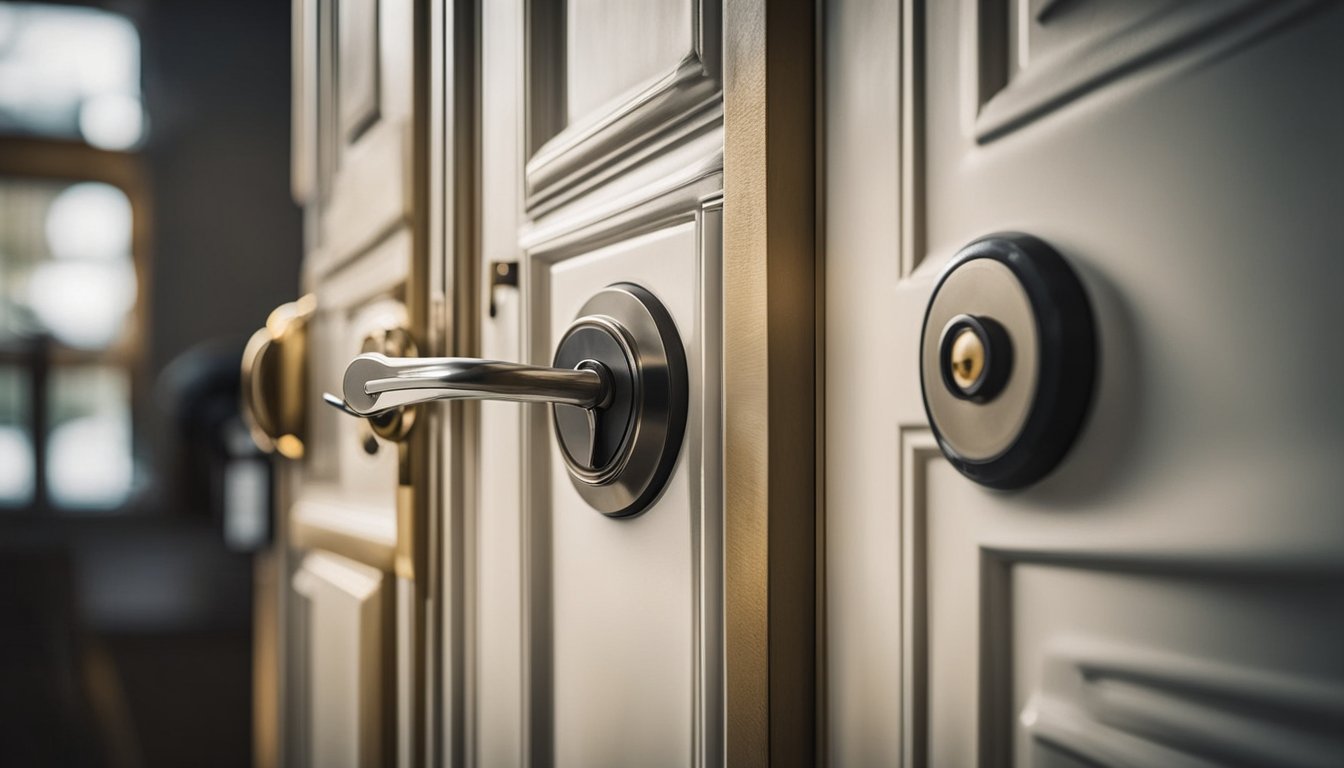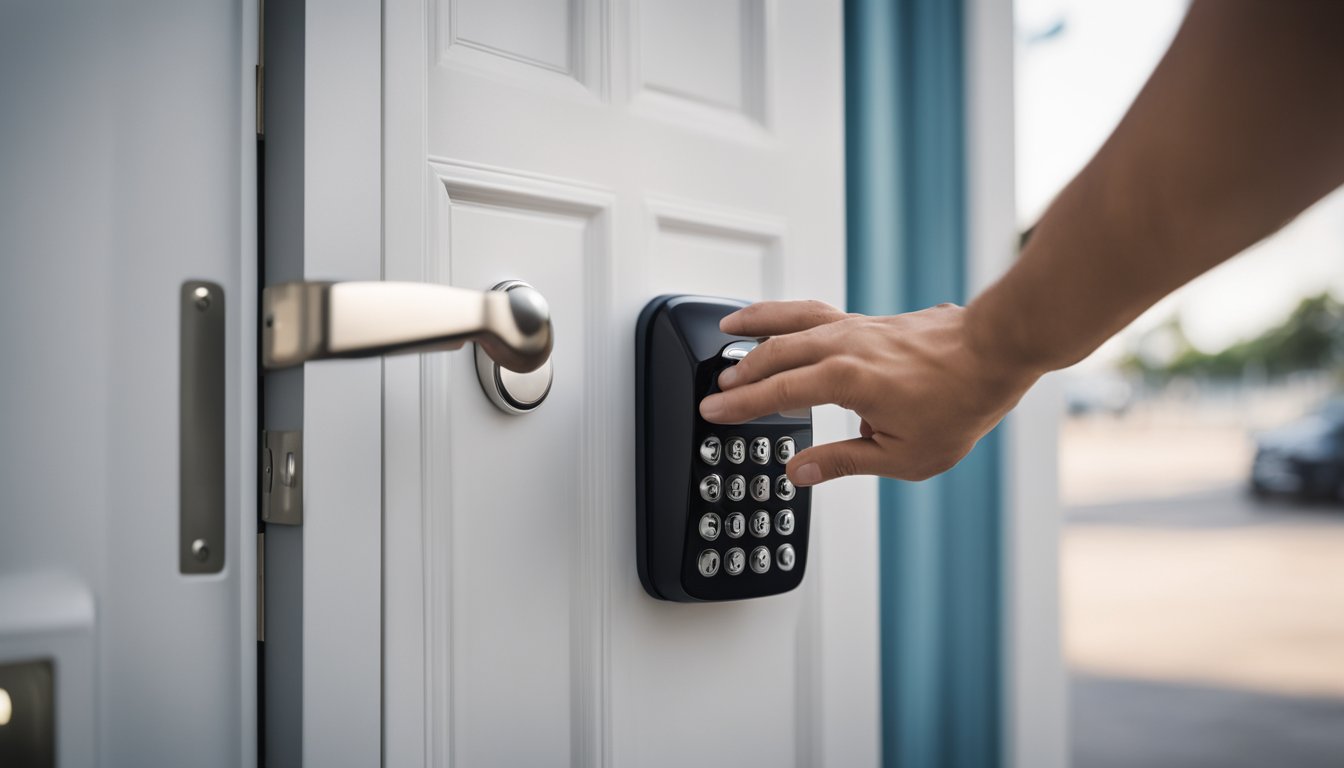Late updated: 27 Jul 2024 12:07
Written by: Elena Prescott
Improving Door Security Without Replacing The Lock: Effective Upgrades
Boosting the security of your front door doesn't always require a full lock replacement. In fact, there are several effective methods to enhance your home security without the need for drastic changes. One simple yet impactful step is to replace the standard three-quarter-inch set screws for your strike plate and hinges with three-inch screws. This change can significantly strengthen the door's resistance to forced entry.

Solid core doors can provide an additional layer of defence. Moreover, implementing outdoor motion sensor lights can deter potential intruders by illuminating vulnerable areas around your entryway. Security screen doors and reinforced glass are also excellent additions, creating additional barriers that make it harder for unwanted guests to gain access.
Adding a video doorbell or security camera allows for real-time monitoring of your front door area. With these tools, not only do we increase the security, but we also gain the ability to monitor and record any suspicious activity. This combination of enhancements creates a robust and reliable security system.
Key Takeaways
- Replace short screws with long ones for stronger door resistance
- Install motion sensor lights and solid core doors
- Use video doorbells for real-time monitoring
Assessing Your Door's Current Security Features

When improving door security without replacing the lock, it's critical to evaluate the door's overall resilience, lock types, and the components that hold everything together. This helps to identify potential weak points that burglars might exploit.
Evaluating the Strength of Your Door
The door itself plays an essential role in security. Solid-core doors made from wood, steel, or fibreglass offer much better protection against forced entry compared to hollow-core doors.
Steel doors provide greater strength and durability but can rust over time. Solid wood doors are visually appealing and robust but might require regular maintenance. Fibreglass doors combine strength with low maintenance and resist various weather conditions effectively.
Inspecting your door for signs of wear, such as cracks or warping, is crucial. Even a strong, solid door can become a weak point if it's compromised in any way.
Understanding Lock Mechanisms
Locks are the first line of defence, but not all locks are equal. Deadbolts offer better security than simple latches. Consider upgrading to grade 1 locks, as these are tested to withstand more force and have higher resistance to lock picking.
Smart locks and keyless locks add another layer of security by eliminating the risk of losing keys or having them copied. Despite their convenience, ensure they are paired with a reliable backup system to avoid getting locked out.
Review the pros and cons of each lock type carefully. Ensuring that the lock fits well within the door and isn't loosely attached is also vital in preventing easy removal or tampering by intruders.
Examining the Door Frame and Hinges
The door frame and hinges are just as crucial as the door and lock itself. A strong door secured with weak frames or hinges can still be an easy target. Reinforcing the door frame with longer screws (at least 3 inches) made of steel can prevent it from being easily pried open.
Check the hinges for any corrosion or looseness. Replace them with heavy-duty variants if needed. Consider security hinges that have non-removable pins to further enhance resistance to forced entry.
Installing a strike box and upgrading the strike plate to a heavy-duty strike plate with longer screws will significantly improve the anchorage of the door. By focusing on these areas, we ensure burglars have a harder time breaching entry points.
Enhancing Door Security Without Lock Replacement
We can significantly improve the security of our doors without needing to invest in new locks. By incorporating physical reinforcements, integrating technological solutions, and adopting smart habits, we bolster our defences against potential intruders.
Physical Security Enhancements
Adding longer screws to door hinges and strike plates can make our doors sturdier. Replacing standard ¾-inch screws with 3-inch screws prevents easy forced entry.
Security bars and door braces are simple yet effective. A horizontal door security bar or door barricade can withstand considerable pressure, stopping intruders in their tracks.
Security films on glass parts of doors enhance their strength, making them shatter-resistant. For sliding doors, a sliding door security bar ensures they can't be forced open from the outside.
Technological Security Additions
Utilising modern technology dramatically enhances door security. Installing a video doorbell or doorbell camera helps us see who is at the door, even when we are not home. Popular options include Ring and other smart doorbells.
Adding security cameras and motion sensor lights around our entrance deters burglars. The combination of cameras like a doorbell camera with porch lights ensures good visibility and monitoring.
Homeowners might consider door and window sensors as part of a comprehensive home security system. These sensors alert us to any attempts at forced entry.
Visual Deterrents and Security Habits
Visible security measures play a crucial role. A security screen door or security screens signal to burglars that our home is well-protected.
Choosing bold colours for our doors can drive attention. A well-lit entrance with bright porch lights and motion sensor lights ensures visibility, discouraging trespassers.
Adopting good security habits such as always locking doors, using a door chain, and ensuring all entry points are secure, especially for sliding doors, goes a long way. Installing a wide-angle peephole or security bar adds another layer of protection.
These strategic enhancements ensure our home remains secure without the need for lock replacements. By focusing on reinforcing our current door setup, we can create a robust barrier that deters potential intruders.
Frequently Asked Questions

Improving door security without replacing the lock can be achieved through a variety of methods, both simple and advanced. Below, we address some common questions on enhancing door security effectively.
What are some DIY methods for enhancing the security of an existing door lock?
We can increase the security of an existing lock with minimal tools. Adding longer screws to the strike plate can greatly enhance its strength. Reinforcing the doorframe with a metal plate also helps. Additionally, installing a door brace or angled entry door reinforcement can provide extra protection against forced entry.
How can one increase the security of a door from the outside without altering the original lock?
To secure a door from the outside, consider using a portable door lock, which attaches easily and requires no permanent changes. Door security bars placed under the doorknob can prevent the door from being opened from the outside. Another option is to use a keyless entry security device that can be temporarily installed.
What tactics can be employed to fortify a front door from the inside?
From the inside, we can use door braces or security bars to block entry. Installing a peephole or a smart doorbell camera can also add a layer of security by allowing us to see who is outside without opening the door. Additionally, placing a metal reinforcement along the door edges can prevent the door from splitting under pressure.
In which ways can a door security bar be effectively used to prevent unauthorised entry?
Door security bars can be positioned under the door handle or knob to provide resistance against forced entry. To use effectively, ensure the bar is adjusted to the correct height and firmly wedged against the floor. These bars work well on hinged doors and can be used on sliding doors with appropriate attachments.
What approaches are recommended for reinforcing a door and making it more resistant to break-ins?
Reinforcing a door involves more than just the lock. We can install a metal reinforcement plate or a door armour kit for added strength. Using heavy-duty, high-quality deadbolts, and ensuring that the door is solid core rather than hollow, significantly improves security. Moreover, using additional hardware like security hinges and robust door viewers can deter break-ins.
How can someone secure a door if the lock mechanism is damaged?
If the lock mechanism is damaged, consider using temporary solutions like portable locks or security bars until the lock is properly fixed. We can also place a door reinforcement plate over the damaged area to prevent it from being exploited. Expanding foam can fill gaps and reinforce the structure temporarily, adding a layer of defence.
